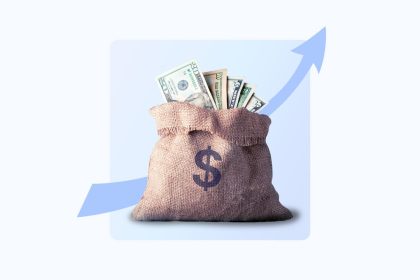Key takeaways
- The cost of a small business loan includes interest and various fees
- Common loan fees include origination fees, underwriting fees, appraisals, late payment fees or prepayment penalties
- To minimize small business loan fees, shop around with multiple lenders to see which one offers the lowest fees
Getting a loan for your company can be a good way to cover unexpected expenses and cash shortfalls or to invest in your business to accelerate its growth. But business loans come at a cost: You have to pay interest and fees when you borrow money.
Understanding common business loan fees and how to avoid or minimize them can help you save money on your loans.
What are small business loan fees?
Small business loan fees are fees charged in addition to the interest rate that you must pay upfront or over the life of the loan. Lenders charge a variety of fees, including origination or administrative fees for servicing your loan, closing costs for getting a real estate loan or prepayment fees for paying off your loan early.
Because every lender charges different fees, you’ll have to shop around and compare multiple lenders to see which one offers the lowest cost. You should especially shop around if you have poor credit since lenders often charge higher fees to risky borrowers.
Can you avoid small business loan fees?
You can’t avoid most business loan fees, although you can shop around with multiple lenders to see which one charges the lowest fees. However, there are a few fees you can avoid, including late payment fees and nonsufficient funds fees.
Prioritize timely payments to avoid late payment fees. You can set a reminder or utilize autopay from your business bank account to streamline repayment. Also, keep an eye on your bank account so you don’t overdraft and get hit with a non-sufficient funds (NSF) fee.
Common business loan fees
Business lenders can charge a variety of fees, though lenders typically won’t charge all of these types of fees. Learn about the different fees that lenders charge so that you know what to look for in your loan agreement.
Administrative fee
An administrative fee is a generic fee that isn’t very specific about what it covers. Lenders charge these fees to pay for various administrative and paperwork costs related to receiving your loan application, reviewing it and disbursing funds.
Annual fees
Annual fees are regular charges you pay each year you have a loan. They’re common for business lines of credit or business credit cards because these forms of financing offer a revolving line of credit that you can draw from repeatedly. To pay for that convenience, you will need to pay the annual fee to keep the credit line open and available. Annual fees typically range from $50 to a few hundred dollars.
Application fee
An application fee is an upfront fee lenders charge when you submit your application. The fee covers the cost of reviewing your application and making a lending decision.
The best business loans won’t charge an application fee. In general, try to avoid these fees because you could wind up paying the fee only to get denied.
Appraisal fee
If you’re getting a secured business loan, the lender may hire an appraiser to determine the value of that collateral. In doing so, the lender ensures that the collateral will sufficiently back the loan amount and protect their investment.
The cost of the appraisal fee will depend on the collateral you’re getting assessed. Business equipment appraisals can cost as little as $500 all the way up to $10,000 for complex equipment like medical machinery.
For commercial real estate, you can pay anywhere from $2,000 to $5,000 for small properties up to $10,000 or more for large facilities. You can ask an appraiser for the appraisal cost upfront so that you can prepare for this fee.
Bankrate insight
Common types of business collateral used to secure a loan include:
- Real estate
- Business equipment
- Inventory
- Cash
- Invoices
Closing costs
Closing costs are common for real estate loans. You pay these fees when you close on the loan and sign the final paperwork. However, closing costs usually include many other fees, such as appraisal fees, attorney fees, credit check fees, and other related costs.
Collection fee
If you default on your business loan by missing a payment or multiple payments, the lender will charge you a fee to cover the cost of trying to collect the money it is owed. The fee is often a percentage of the amount owed.
Credit check or credit check fee
A credit check fee covers the expense of requesting a copy of your credit report from one of the credit bureaus. In most cases, the lender will not charge this fee as a separate fee but will roll the cost into other fees charged.
However, you may pay a fee ranging from $50 one time to $150 per month for checking your own business credit. Fees vary depending on what option you buy from the business credit bureaus as they typically offer multiple credit check packages.
Draw fee
A common business line of credit cost, the draw fee may be charged each time you draw money from your line of credit. This fee is typically a percentage of the amount drawn, such as 1 percent or 2 percent. Not every lender charges a draw fee, so you may want to consider line of credit lenders that don’t charge this fee to save money on withdrawals.
Late payment fee
Lenders assess a late payment fee when you make a payment after its due date. The fee can be a flat amount, around $30 or $40, or it can be a percentage such as 5 percent of the loan payment.
Non-sufficient funds fee
If you try to make a payment by check or bank transfer, only to find that you don’t have enough money to cover the payment, your lender could charge a non-sufficient funds (NSF) fee. Your bank might also charge a similar fee or overdraft fee for overdrawing your account, or it may deny the transaction entirely.
Typically, the nonsufficient funds fee is a flat amount of around $10 to $50, with the exact amounts depending on the lender.
Origination fees
Origination fees are upfront charges that cover the cost of reviewing your application and funding your loan. Sometimes, the lender may call them administrative fees.
Origination fees are usually a percentage of the borrowed amount, about 2 percent to 5 percent. To pay the fee, you can either reduce the amount of money you receive or increase your loan’s starting balance.
For example, if you get a $10,000 loan with a 2 percent origination fee, you can receive either $9,800 or $10,000 but have a starting loan balance of $10,200.
Prepayment penalties
A prepayment penalty is a fee you must pay if you pay your loan off ahead of schedule. Not every lender charges this fee, and you won’t have to pay it if you follow the loan’s minimum payment schedule.
Typically, this fee is a percentage of the amount paid early. Before paying off your loan, compare the interest savings of early repayment to the cost of the penalty fee. Then, you can see if paying off the loan early is worth the cost of the prepayment penalty.
SBA 7(a) guarantee fee
The Small Business Administration guarantees loans offered through SBA-approved lenders, helping small businesses qualify for loans when they can’t qualify for conventional financing. However, to back these loans, the SBA sometimes charges a guarantee fee for SBA 7(a) loans. SBA 504 loans do not get charged this fee; however, they require an annual service fee of 0.331 percent of the outstanding balance of the loan.
For SBA 7(a) loans, the guarantee fees are based on the amount you borrow.
| Amount borrowed | Fee for loans 12 months or less | Fee for loans more than 12 months |
|---|---|---|
| $0 to $1 million | None | None |
| $1,000,001 to $5 million | 0.25% of the guaranteed amount | 3.5% of the guaranteed portion of the loan up to and including $1,000,000, plus 3.75% of the guaranteed portion of the loan over $1,000,000. |
Underwriting fee
An underwriting fee is a charge that covers the amount the lender spent on reviewing your application and preparing loan documents. It’s often a percentage of the loan amount and is common for real estate loans.
Unused line fee
On top of business line of credit rates and draw fees, a lender may also charge a monthly fee based on the amount of your line of credit that you have not used. This is typically a small percentage.
For example, if you have a $100,000 line of credit with a $20,000 balance, you have $80,000 in unused credit. If the fee is 0.10 percent of the unused credit limit, you’ll pay an unused line fee of $80.
Bottom line
Small business loans come with a variety of business loan fees that you can’t always avoid. However, understanding what the common fees are will help you when you’re comparing business loans to decide if you’re given a good loan offer. Be sure to take the time to shop around and compare loan offers to find the lender with the lowest fees.
Frequently asked questions
Read the full article here





